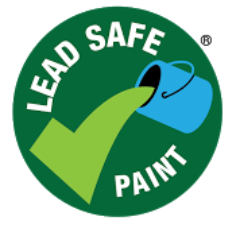The Lead Safe Paint® standard sets the maximum allowable, total lead content of a paint at 90 ppm (dry weight). This is the standard used in mandatory regulation in the U.S., the Philippines, Nepal, India, and other countries, and it is the strictest standard in the world. The 90 ppm limit is achievable when a manufacturer avoids the use of lead pigments and driers in its products, and when reasonable care is given to avoid the use of ingredients that are contaminated or falsely labeled.
High quality, cost-effective alternatives to lead pigments and driers are now widely available every-where in the world. Good and cost-effective alternatives to lead-based corrosion inhibitors are also widely available. And paint producers can insist that their vendors provide other ingredients that are minimally contaminated with lead.
The World Health Organization has indicated there is no known safe level of lead exposure. Because trace amounts of lead are widely dispersed in the environment, zero lead content in paint is not practi-cally achievable. However, when lead pigments and driers are eliminated from paint products, and when good quality control is practiced, the lead content in paint will be well below 90 ppm.
